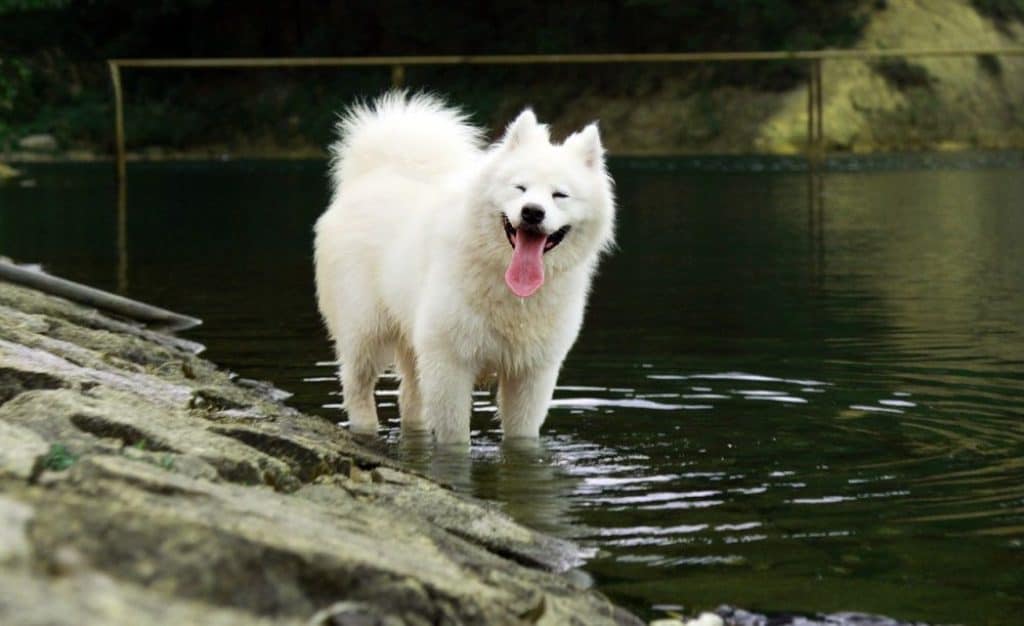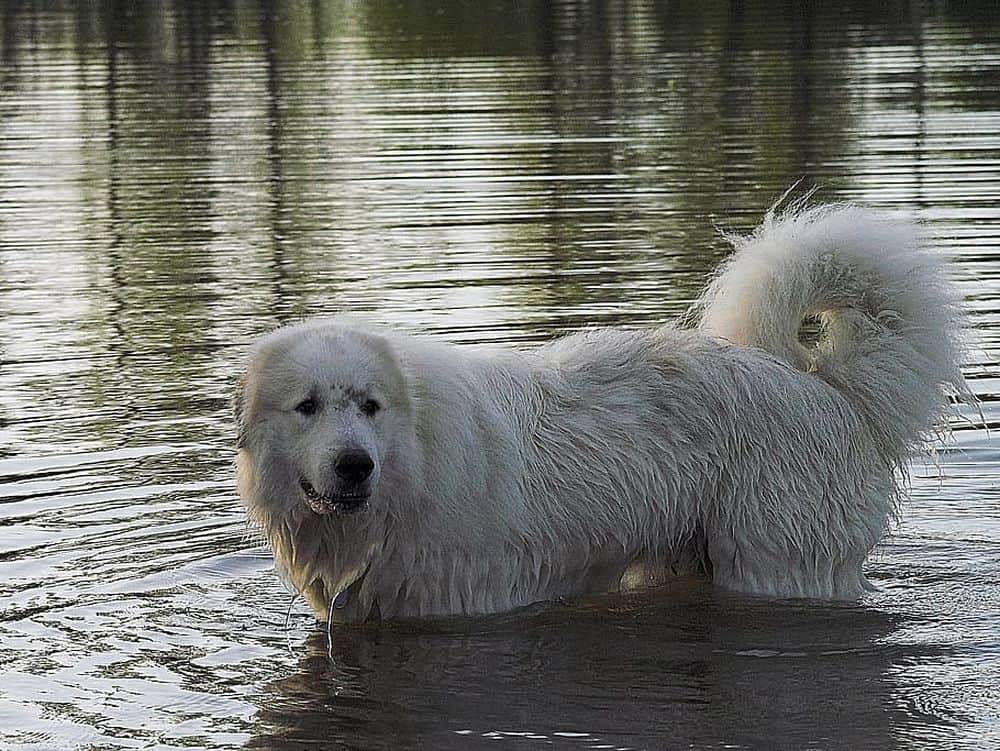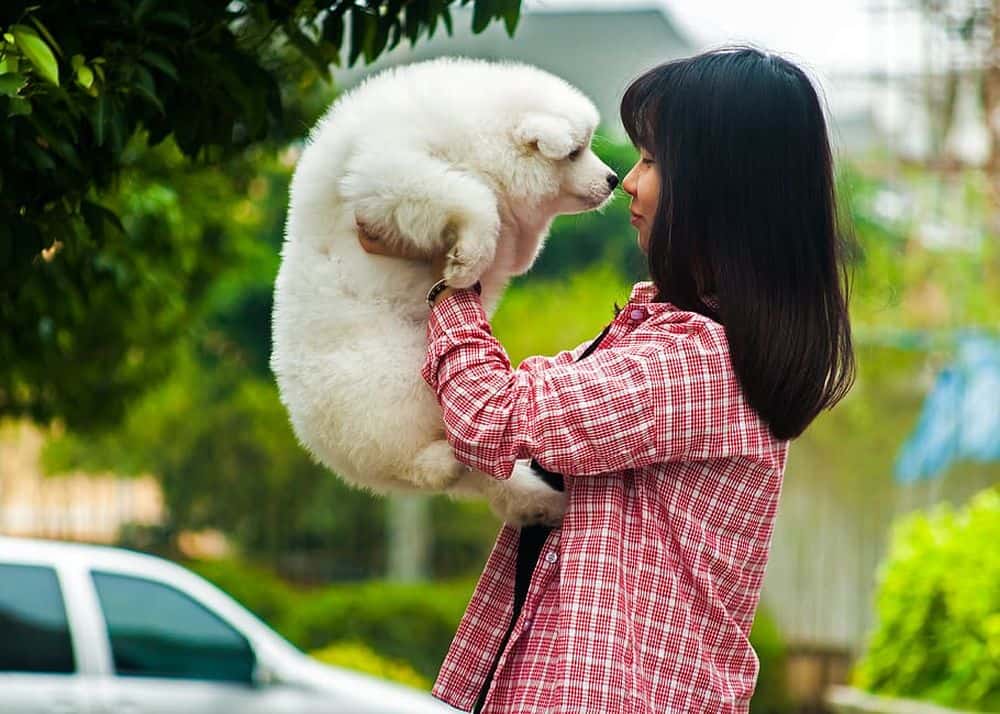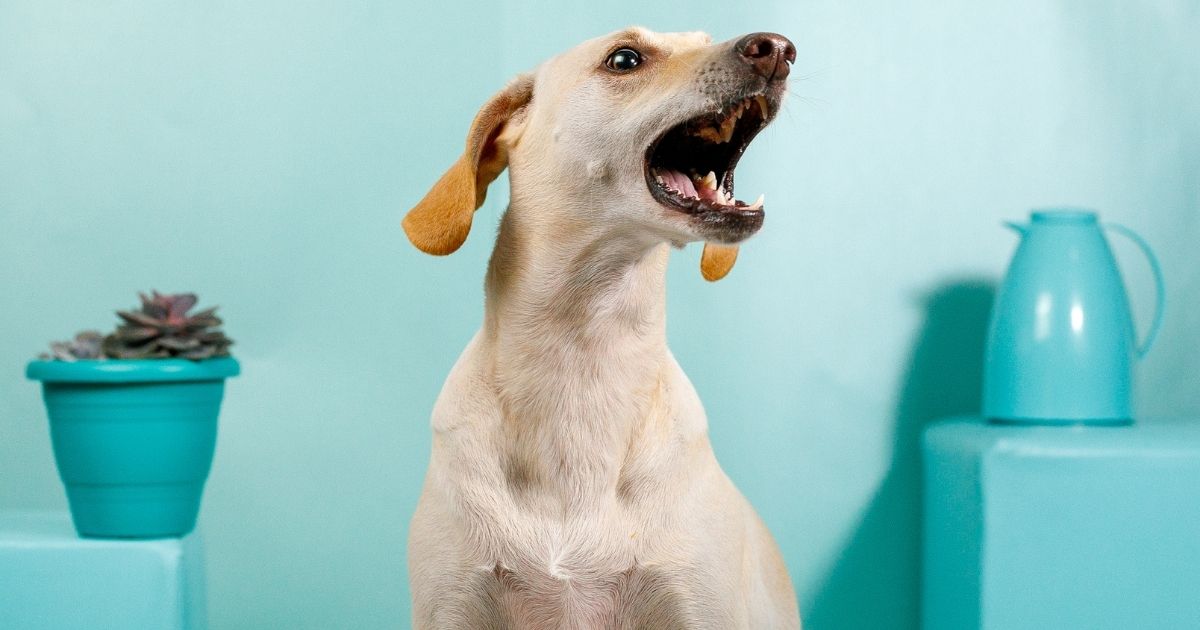Many feel that having a huge dog is nothing but trouble.
They occupy a lot of space, eat a lot, leave a mess behind them, and are difficult to handle.
While this is true for some large breeds, others are some of the kindest and most well-behaved dogs in the whole canine world.
Great Pyrenees and Samoyed definitely belong in the latter group.
Even though they hail from two opposite parts of Europe, these two breeds have a lot in common.
For starters, they’re both huge adorable balls of white fur that could easily be mistaken for mini polar bears.
Bred to help the people in the tough conditions of the Pyrenees Mountains and Siberia, these dogs are hard-working, tough, and extremely devoted to their owners.
Below, I’ll compare Great Pyrenees vs Samoyed to see what else they share, but also to find out what sets the two breeds apart.
| Attributes | Great Pyrenees | Samoyed |
| Good For First Time Owners | No | Yes |
| Good Guard Dog | Yes | No |
| Apartment Friendly | No | With Enough Exercise |
| Good Family Dog | Yes | Yes |
| Shedding | Moderate | High |
| Barking And Howling | Moderate To High | High |
| Height | 25-32 inches (63-81 cm) | 18-24 inches (48-60 cm) |
| Average Life Expectancy | 10-12 Years | 12-14 Years |
[wpsm_toplist]
Great Pyrenees – Dog Breed Information

The Great Pyrenees breed was created in the Pyrenees Mountains area, at the border of France and Spain.
Their main purpose was to herd sheep, a task they often performed alone without human help.
This helped them develop as rather independent, tough, fearless, and alert dogs.
These traits, along with the undying loyalty to their owners, are the main reason that, nowadays, they mostly serve as guardians and family dogs.
Appearance
As it was created for work, this breed is very athletic, with a strong and sturdy body. Still, they’re rather agile and quick on their feet.
The body of the Great Pyrenees is covered with a double coat which serves to protect them from extreme mountain weather.
The topcoat is coarse and long with either straight or wavy hair. The undercoat is denser, softer, and sheds a lot, especially in the spring.
Most Great Pyrenees feature solid white color, although they can sometimes have tan, yellow, or gray patches.
The head is massive, with a thick neck.
Ears are medium-sized and floppy, while the eyes are dark brown with a soulful stare.
The common height for males is 27-32 inches (69-81 cm). Pyrenees’ weight is around 105-120 pounds (48-54 kg).
Fully grown females are 25-29 inches (63-74 cm) high and can weigh between 97 and 120 pounds (44-54 kg).
Temperament
After centuries of being hard workers, Great Pyrenees are today best known as great family dogs.
Despite their imposing stature, they’re very friendly, calm, and good-natured. Their devotion to their families has no limits.
As they rarely tend to sheep anymore, they see the family as their flock and are fearless when it comes to protecting them.
This, along with natural alertness and distrusts towards strangers, makes them fantastic watchdogs.
Inexperienced owners may sometimes find them to be a handful, due to their strong independence streak.
They can be very stubborn sometimes, so it’s important to establish authority as an owner from the earliest age.
Other than that, they’re not too much of a burden.
While they enjoy large spaces, Great Pyrenees are not too active and appreciate having an established routine in their lives.
Samoyed – Dog Breed Information

Samoyeds are an ancient breed with roots in Western Siberia and Northwest Russia.
They were an invaluable part of the culture of indigenous Samoyede people who used to live in these parts.
Samoyed breed helped with pulling the sleds, herding, hunting reindeer, tracking, but also provided warmth and companionship during freezing Siberian nights.
Due to their ability to withstand severely cold weather, they were often part of polar expeditions.
Appearance
Samoyeds are large, spitz-type dogs.
Majestic in stature, they look even bigger than they are due to the abundant white fur covering their body.
As they were developed in one of the coldest parts of the world, Samoyeds have an extremely thick and dense double coat.
The topcoat features coarse, long, and straight hair. The undercoat is soft, silky, and keeps them warm, even in freezing temperatures.
The most common color is pure white, although they can sometimes feature biscuit or cream colorations.
Samoyed head is big and broad, with characteristic short snouts and upturned mouths that create the famous “Sammy Smile.”
Eyes are commonly dark brown, while ears are thick, covered with fur, and erect.
Male Samoyeds grow around 18-24 inches (48-60 cm) and weigh 35-67 pounds (16-30 kg).
Females reach 18-21 inches (48-53 cm) in height and 35-50 pounds (16-21 kg) in weight.
Temperament
Samoyeds are friendly, playful, and gentle dogs who, more than anything else, love to spend time with their family, especially with kids.
They thrive when included in family activities and when given something to do.
However, when left alone they can easily get bored, and even become depressed. Sometimes, they can even get destructive in those situations.
Besides their humans, Samoyeds are also very friendly towards strangers which makes them unsuitable for guarding duties.
They’re known as one of the least aggressive large breeds.
Unlike, most of the large breeds, Samoyeds are very active. They’ll enjoy accompanying their owner on the hiking, running, or biking routes.
Still, they do have strong prey and wandering instincts, so you must be careful, or else they may wander off.
Samoyeds are very intelligent and respond well to training. They will easily learn the basic commands but still require firm and constant leadership.
Great Pyrenees vs Samoyed – What’s the Difference?
| Great Pyrenees | Samoyed |
 |  |
If you’re facing the Great Pyrenees vs Samoyed dilemma while looking for a dog, you should be aware of the differences between the two breeds.
While both of them are among the larger breeds, Pyrenees are significantly bigger and will need more space.
On the other hand, Samoyeds can better adjust to apartment living, but shed much more and have higher grooming requirements.
Both breeds are very friendly and gentle, but Samoyeds are more social and will get more attached to family members.
They don’t have the same level of independence tendencies and stubbornness as the Great Pyrenees.
This also makes Samoyeds the better choice for inexperienced owners.
However, if you’re looking for a dog to protect your family and property, then you should go with the Pyrenees.
They’re more alert, can be aggressive when needed, and are much more distrustful towards strangers.
Conclusion
Both Great Pyrenees and Samoyeds have traits and qualities that put them at the very top of the list when we talk about large dog breeds.
If you don’t mind occasional clumsiness and can provide them a lot of space, then you should certainly think about these two breeds when looking for a dog.
The Pyrenees are a bit more difficult to handle, both in terms of size and personality. On the other hand, they will gladly put their life on the line to protect you.
Samoyeds are more easygoing and will be happier to accompany you during all sorts of activities.






